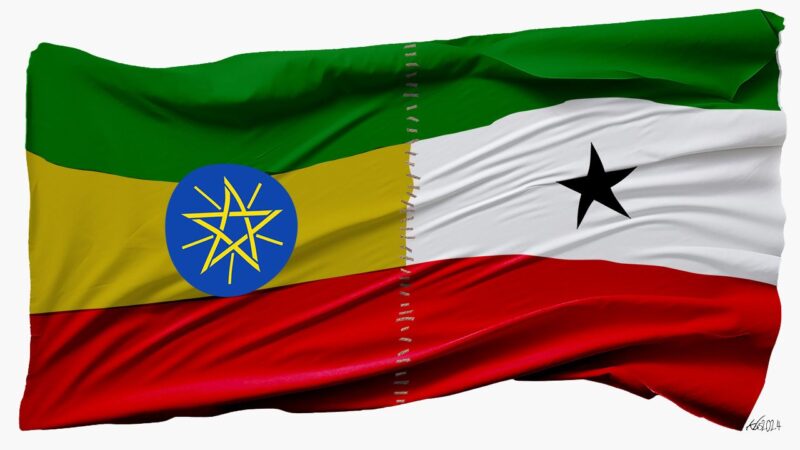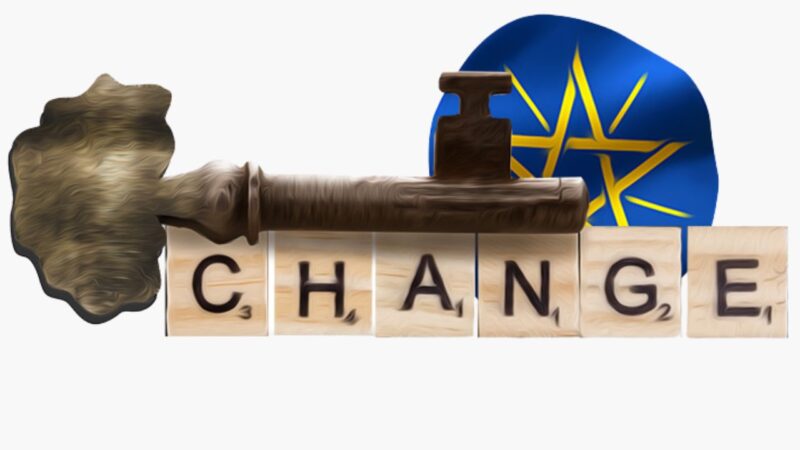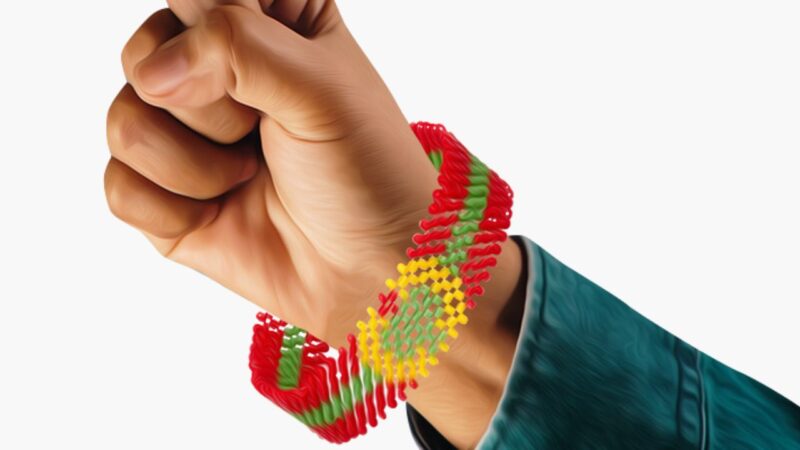The Article One Movement is the coming together of progressive people’s movements and individuals asserting their constitutional right to bring about a rule of equality, justice and democracy in Kenya. These principles, although enshrined in our Constitution, have been consistently suppressed by the KANU-inspired governments of Kenya since independence in 1963. But no more.
Paths Are Made by Walking
The people of Kenya spoke when they took up arms under Mau Mau to overthrow colonial enemies who had captured our land and resources and had massacred our people. Our resistance was just and brought us independence. But colonialism out-manoeuvred progressive forces and handed power at independence to the comprador Jomo Kenyatta and KANU who upheld the colonial and capitalist policies of their colonial controllers. People have been struggling ever since to ensure a rule of justice and equality.
We do not need a legal justification for continuing our struggle against injustice and state capture by capitalism and imperialism. But for those who need it, our Constitution provides Article One which is further explained below. We do not need any justification for resisting economic exploitation and social oppression that working people suffer in their daily lives. But we have been weakened by our disunity in resistance. This comes to an end today as we unite under the umbrella of the Article One Movement to regain our power to establish a rule of justice and equality which is our historical right. Land and Freedom is what the Kenya Land and Freedom Army fought for. Land and Freedom remain our demand to this day.
The coming together today of the Article One Movement takes place on Kimathi Day as we remember our Shujaa and follow his example of active resistance to oppression and exploitation. But this is not a one-off celebration. It is the beginning of a new chapter in the struggle of the people of Kenya. All the members of the Movement stand united in their commitment to end the rule of injustice. We shall continue our struggle until we achieve victory. Today is the beginning of a people’s united movement for justice and equality which can only be realised once people power is in command. This we pledge to struggle for. Until Victory.
Today is the beginning of this new phase of people’s resistance. We will carry on this campaign throughout the year as we mark the achievements and sacrifices of those who gave their lives for our freedom: Pio Gama Pinto, Makhan Singh, Bildad Kaggia and many others.
Today is the Day. Paths are made by walking. We chart a new path today.
II: A Brief Historical Context of the Article One Movement
It is important to recall that the armed wing of the Mau Mau Movement was appropriately named Kenya Land and Freedom Army (KLFA). As KLFA fought the British colonialists underground, Markhan Singh’s clarion call for independence was taken up and mobilized above ground. Independence itself in 1963 can be described as a revolution waged both underground and above ground against British imperialism.
When this revolution was betrayed, resistance continued against the comprador state and its leadership through political parties and movements. A number of underground movements emerged, among them, the December Twelve Movement and Mwakenya. Kenya Peoples Union (KPU) was the radical political party that resisted this betrayal.
Ukombozi Library in Nairobi is a rich source of the underground resistance from the 1960s, which faced the experience of the underground movements after independence and the Second Liberation becomes the mobilizing force above ground. Comrade Shiraz Durrani must be given due recognition as the organic intellectual who has given form to this history of our struggle, writing and archiving the history of these struggles. Vita Books has published several books that restore Kenya’s history from a working-class perspective. The process of liberating our minds with relevant information is the first step towards liberating our country.
Kenya’s history can be seen at two levels: The history of resistance and the ideological struggle.
The fall of the Kanu-Moi dictatorship gave us the Kanu-Kibaki-Uhuru-Ruto dictatorships and oppositions that are birds of the same political feather. They are enslaved by foreign interests, which reward them richly. When we call this elite a comprador bourgeoisie, we mean that they are agents of foreign capital and their respective imperialist bourgeoisie. This explains, for example, why the Kenya Kwanza government does not consult us as decreed by the Constitution when it enters trade pacts with the US and the EU, and into various infrastructural agreements with the Chinese. We have not been consulted when foreign policy that is decreed by the executive humiliates us as citizens of Kenya. Such actions as the decision to send our police officers to Haiti and the government’s seesawing stand on the Palestine-Israel War are examples of this subversion of our sovereign power. The Azimio opposition – or its conflicting coalition of parties – has simply blown hot and cold politically on this issue.
The Kanu dictatorship celebrated its 60 years of foreign enslavement and total betrayal of the will of the Kenyan people on Jamhuri Day, 12 December, last year. This dictatorship has been enabled by opposition parties that have all betrayed the vision of the KPU. Apart from the KPU, other opposition parties have simply been factions of the Kanu dictatorships. Even Jaramogi’s FORD Kenya did not reach the political heights of the KPU because Jaramogi did not have political descendants to continue resistance against the foreign interests that he well describes in his autobiography, Not Yet Uhuru.
We hear of the political narrative that between Kenya Kwanza and AZIMIO there exists a lesser evil with which the resistance movement can ally itself. This opportunistic and ahistorical political position suits the dictatorship and its masters, the foreign interests. And this is why the Constitution will never be implemented by any faction that assumes power. This is why no faction in power will come to us for consultation – what the Constitution calls the participation of the people. The participation of the people in all societal matters – be they economic, social, political, cultural, or spiritual – anchors the implementation of Article 1 of the Constitution.
The final word on the streets of Kenya is clear:
Today, as we, the working people of Kenya, take this important step of coming together under the umbrella of Article One Movement, we remember our leaders who have guided us politically and ideologically on the path of liberation. We remember:
We liberated ourselves from colonial domination. We shall similarly liberate ourselves from the comprador rule that has captured our economy, our land, our resources, and our state. Power!
Our constitutional mandate
ARTICLE 1of the 2010 Constitution decrees that:
- All sovereign power belongs to the people of Kenya;
- This sovereign power shall be exercised only in accordance with our Constitution;
- We can exercise our sovereign power either DIRECTLY or through our democratically elected representatives;
- We have delegated our sovereign power to Parliament and the legislative assemblies in the counties; the national executive and executive structures in the county governments; and the Judiciary and the independent tribunals;
- We exercise our sovereign power at the national and county levels.
What cannot be in doubt is that if we can delegate sovereign power to the state organs specified above, we can also WITHDRAW it from them. This assertion, commonsensical as it is, is yet to be tested in the courts of law.
When Article 1 is read in conjunction with Article 3 [1] “Every person has an obligation to respect, uphold and defend this Constitution” and [2] “Any attempt to establish a government otherwise than in compliance with this Constitution is unlawful,” the political argument can be made that we can withdraw sovereign power where it is delegated through public interest litigation in any of the High Courts or Courts of equal status in Kenya. In the event the Courts refuse the people’s demands of withdrawal of sovereign power, the people can consequently withdrawal their sovereign power from the Judiciary itself through mass action, making political demands on the basis of the orders that were sought in court in the first place. The sovereign power of the people of Kenya makes them the ultimate sovereign, namely, the sovereign national and county executive, sovereign parliament and county assemblies, the sovereign judge and judicial officer, notwithstanding that the judges and judicial officers still talk of “my court” when under the Constitution all courts are now truly people’s courts!
THE ultimate sovereign owns and controls all land and other national resources. All activities to which delegated sovereign power is given speak in the name of the ULTIMATE SOVEREIGN.
The people of Kenya can organize themselves through movements and political parties, and through these movements and political parties, exercise their direct sovereign power.
Transformative Constitutions as Sites of Struggle
We should not fetishize constitutions, but we cannot deny that what we call transformative constitutions (because of the process used to make them, the emphasis on social transformation in areas of governance, values, independence of institutions, equitable distribution of resources, trajectories of reform, and because, although liberal, in nature they also have abstract social democratic, radical, and revolutionary ideas in them) are sites of struggle.
Samir Amin calls the victories of struggles that result in transformative constitutions and other struggles “small revolutions” while Rodney sees historical “links and continuities” in struggles that resist the status quo.
Issa Shivji says constitutions do not make revolutions but revolutions make constitutions. He concedes, however, that constitutions matter and that they are sites of struggle as long as working class movements craft political demands from the provisions of the constitution and mobilize and organize the masses on such basis.
Such political demands can be the basis of the growth of mass movements. Currently in Kenya, social movements (including radical feminist movements) focus on all the issues of the communities in which they reside, in both urban and rural areas. So, they are organizing and mobilizing the working classes in the face of weak trade unions, cooperatives, and farmer’s movements. Human rights NGOs have since the 1990s taken up workers’ rights, the rights of peasants, women, and the middle classes. The land cases involving the Tallai and Ogiek communities owe their success to the partnership between these NGOs and the peasant communities in those areas. It is important to acknowledge that – following in the wake of religious and political organizations – these new formations are mobilizing a following that is critical for organizing for social transformation.
In some of social movements radical and revolutionary political parties, however embryonic, are working in partnership where the social movements keep the political parties in the revolutionary path. We have examples of struggles going on in some of the radical political parties in Kenya. The comprador bourgeoisie in Kenya is fighting tooth and nail to not cede even an inch of the political space they occupy. Alternative ideological and political formations face these political hurdles and none of them fail to view the Constitution as the site of their struggles. There has been collaboration between the middle-class movements and their grassroots compatriots, but that bridge of collective struggle is still under construction, and has its problems. Yet, the Constitution allows that bridge to be built. As one of the radical social movements has acknowledged, “Mageuzi huzaa Mapinduzi” – social transformation can birth a revolution. We also have a network of organic intellectuals led by self-educated and educated youth who run libraries and reading and reflection political cells. Kenya therefore has a great political opportunity to forge a broad ideological and political front of the Kenyan Left.
Power to the working people of Kenya!








